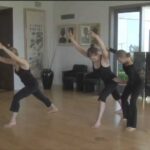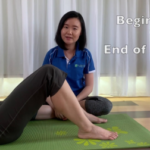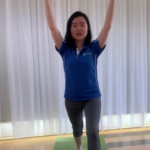Benefits and Research
The Alexander Technique attracts individuals wanting to improve mobility, ease postural discomfort, reduce chronic pain, and manage stress, while others seek lessons to advance their skills in the performing arts and athletic endeavours. Browse the menu lists below to learn more about how Alexander Technique can benefit you.
Use of resources
Please note that the content within the Research & Resources and Videos sections is provided only for general information purposes.
Use of Resources
Please note that the content within the Research & Resources is provided only for general information purposes. Many of the resources, such as books, are not free. Links to other websites or platforms are provided for viewers’ convenience, but ATC does not control or monitor them and accordingly cannot endorse their information or guarantee its accuracy and relevance. The use of content or links to third-party websites is at the viewers’ own risk. Viewers should contact an ATC-certified Alexander Technique teacher with any questions about the application of Alexander Technique to their specific issues.
YOGA
- Benefits
- Resources
- Videos
- Testimonials
The F.M. Alexander Technique and the Yoga B.K.S. lyengar are two traditions of education in physical and psychophysical awareness that find inspiration from movement. They have numerous intersections. At their centre, each fosters a firm belief in the importance of self-awareness as an instrument of change. The emphasis on how we live our lives significantly acknowledges “use affects function” and beyond, literally both on and off the mat.
While Alexander Technique is devoted to the principle of inhibition (foregoing an act, or even a thought), before realizing an intention, lyengar is known for its dynamism, its no-nonsense approach to intensity of action.
In both traditions there is a need to cultivate awareness, to be mindful in action, to progress. lyengar’s method promotes action: beginners learn to balance, to move quickly and with grace. Hesitation is not encouraged. Alexander’s approach is a direct contrast, beginning by non-doing. Over time, through the development of one’s own practice, the keys to self-awareness become more similar in both disciplines.
The effect of witnessing the presence of a veteran of the arts (singer, actor, musician) or an accomplished athlete or martial artist is similar to the insights gained from a consummate Alexander or yoga teacher. Whether working with a student verbally or physically, conveying the essence of the Technique is close to the effects of tuning in to a seasoned yoga teacher. Allusions to the wisdom of the Yoga sutras of Patanjali are often inlaid throughout the classes or lectures, much as Alexander teachers refer to Alexander’s writings and pithy aphorisms.
In Asana one becomes more present by doing. The intention is not to get distracted by thoughts or habits. This contrasts to Alexander’s method of observing even the slightest shift or hesitation that may be indicative of movement by rote.
One of the tools in lyengar Yoga is the adherence to the 8 stages, the gradual deepening of control through understanding one’s self first, and then in relation to society. Particularly, Pranayama can give the practitioner a way to find a calmness and self-restraint leading to the later stages of Astanga, or 8-fold path. Alexander’s discovery of the “whispered ah” is a universal mechanism of opening up the vocal system to its full depth, and with it all the emotions and means of communication it facilitates.
Both techniques have alignment at their core. Both use physical correction, and “hands-on” work of Alexander Technique is often used to convey a way of being. A great deal of restorative and therapeutic work is covered in each discipline, not so much by the hands-on of the teachers, but by the brave efforts of the students themselves. These are tools for self-development.
Neither is truly religious in the conventional sense of the word, but both are potentially life-changing, and ultimately inclusive. Observation and listening are equally encouraged in both these worlds. (Written by Johanna Godliman.)
Books
There are no testimonials currently available.





